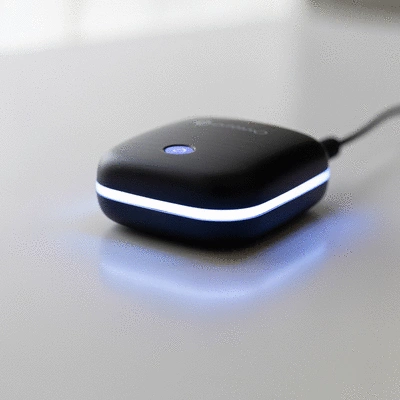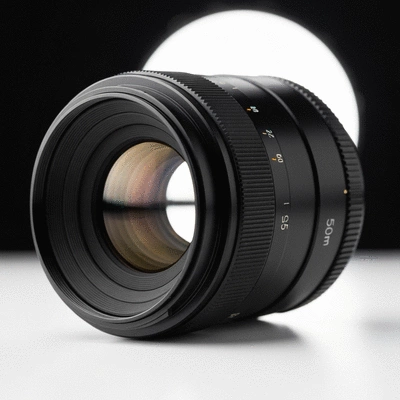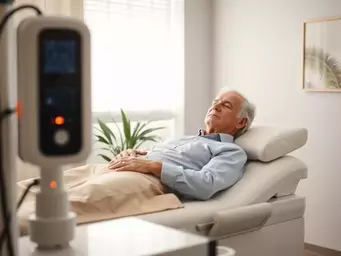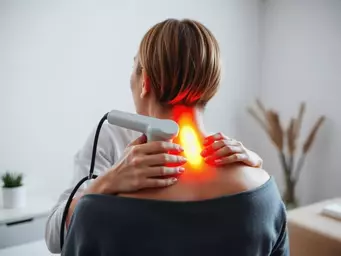What is Non-Invasive Laser Therapy?
- ✓ Utilizes low-level lasers or LEDs
- ✓ Non-invasive and painless application
- ✓ Targets pain at the cellular level
- ✓ Promotes natural healing processes

Curious about how a simple light can transform your pain management journey? Non-invasive laser therapy (LLLT) is reshaping the landscape of chronic pain treatment, offering a gentle yet effective solution. Join us as we uncover the key insights you need to know about this innovative approach!
Non-invasive laser therapy stimulates cellular processes to promote healing, reduce inflammation, and improve blood flow. This visual breaks down the key mechanisms.
Non-invasive laser therapy, also known as low-level laser therapy (LLLT), is a cutting-edge approach that offers a gentle solution for chronic pain management. Unlike traditional invasive procedures, LLLT is designed to promote healing without the need for surgery or extensive recovery times. This makes it an increasingly popular choice for both patients and healthcare providers who seek effective pain management options.
At Erchonia Laser, we believe in empowering individuals with knowledge about non-invasive solutions. By understanding how non-invasive laser therapy works, you can make informed decisions about your health and wellness.

Non-invasive laser therapy involves the use of low-level lasers or light-emitting diodes (LEDs) to stimulate cellular processes. This therapy is particularly relevant in managing chronic pain as it targets the underlying causes rather than just masking symptoms. By using specific wavelengths of light, LLLT encourages healing and provides a safe alternative to conventional pain treatments. For a deeper understanding of its therapeutic applications, you can consult research on Photobiomodulation Therapy, which highlights how light can be used to stimulate cellular function.
Through its unique mechanism, non-invasive laser therapy holds promise for those looking to alleviate pain while avoiding the side effects often associated with medications.
The mechanism of action behind non-invasive laser therapy is fascinating. When the laser light enters the body, it interacts with cells, leading to several beneficial effects. These include enhanced cellular repair, reduced inflammation, and improved blood flow. Think of it as jumpstarting your body's natural healing mechanisms! This process, often referred to as photobiomodulation, involves light affecting biological processes at a cellular level.
Understanding these aspects can greatly influence your perspective on pain management and recovery. Patients often report noticeable improvements in their conditions after just a few sessions!
Photobiomodulation is the scientific term for the process by which low-level lasers promote healing. This technique contributes significantly to tissue healing and pain management. By modulating cellular responses with light, LLLT helps repair damaged tissues and alleviate inflammation, playing a crucial role in chronic pain relief. Further insights into how this therapy supports tissue healing and pain management can be found in scientific literature.
Research shows that photobiomodulation can lead to:
Recognizing the impact of photobiomodulation can help patients and practitioners alike appreciate the benefits of incorporating laser therapy into treatment plans.
When it comes to pain management, laser therapy offers a host of advantages that can significantly enhance the quality of life for those living with chronic pain.

As you consider the benefits of non-invasive laser therapy, what aspect excites you the most? Is it the potential for pain relief, the holistic approach to healing, or the non-invasive nature of the treatment? Share your thoughts below:
As we look back over the discussion on non-invasive laser therapy, it's clear that its benefits for managing chronic pain are significant. This innovative approach not only promotes healing but also prioritizes the safety and comfort of patients. By utilizing advanced technology, laser therapy effectively addresses pain without the need for invasive procedures or harsh medications.
Some key advantages of laser therapy that stand out include:
Reflecting on these aspects, it's no surprise that more patients and healthcare professionals are turning to Erchonia Laser for reliable and effective pain management solutions.
If you're intrigued by the potential of laser therapy for pain relief, I encourage you to take the next step! Consulting with a healthcare professional can help you explore this treatment option further. They can assess your specific needs and create a personalized pain management plan that may incorporate non-invasive laser therapy.
Remember, it's essential to discuss all your options, including your medical history and any concerns you may have. This collaborative approach ensures that you receive the best care tailored to your situation. At Erchonia Laser, we are committed to empowering you with knowledge and support as you navigate your path to wellness!
Here is a quick recap of the important points discussed in the article:
Understanding Red Light Therapy

Curious about how light can play a pivotal role in healing? The world of light therapy is rich with
Erchonia Laser Therapy for Pain Management

Curious about a non-invasive solution to chronic pain? Erchonia Laser Therapy is emerging as a revol
Relieving Neck and Shoulder Pain

Consider this: neck and shoulder pain affects millions, yet many are unaware of the root causes. Und
Understanding Red Light Therapy
Erchonia Laser Therapy for Pain Management
Relieving Neck and Shoulder Pain
Erchonia Laser and Back Pain Outcomes
Exploring Erchonia's Laser Technology Science